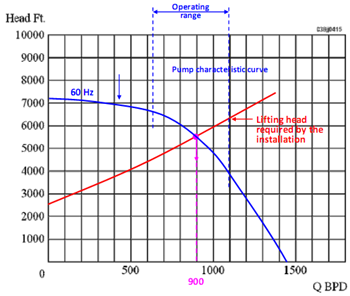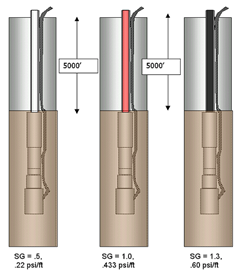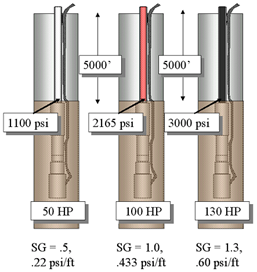To properly select the pump, well performance must be estimated. Fundamentally, well performance estimates define what additional energy (i.e., volumetric flow rate and differential pressure or head) must be supplied by the pump to deliver a desired stock tank flow rate (API RP11 S4).
It is common to simplify the procedure by combining or summarizing the additional energy that the pump must supply into a single term, Total Dynamic Head (TDH). TDH is a summation of the net vertical distance fluid must be lifted from an operating fluid level in the well, the frictional pressure drop in the tubing and the desired wellhead pressure.
TDH = HD + HF + HT

The following plot depicts the curve of the lifting head required by the well as a function of the flow rate:

The operating point of the pump is the intersection of pump characteristic curve and the curve of the lifting head required by the installation (Head = 5500 ft, Q = 900 bpd):

Effect of the fluid density:
The Dynamic Head generated by a centrifugal pump is independent of the density pumped. Hence, the same pump at the same rotational speed will generate the same head, regardless of the density of the fluid pumped (the dynamic head expressed in length unit will be the same whether the fluid pumped is pure water (density=1), crude oil (density < 1) or brine (density > 1).

However, that does not mean that the pressures or horsepower required are the same! Pressure delivered by the pump (discharge pressure) depends on the density of the pumped fluid.






